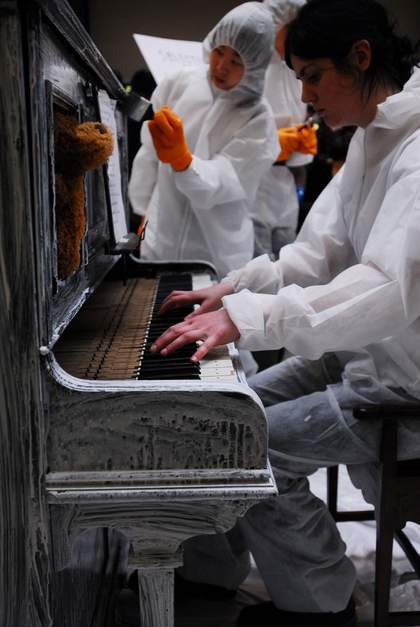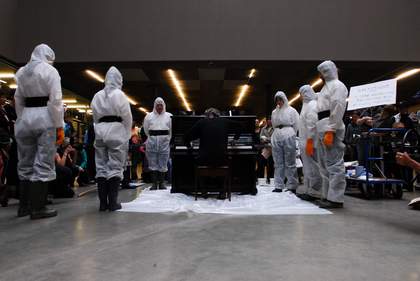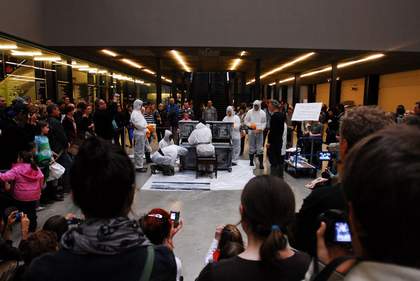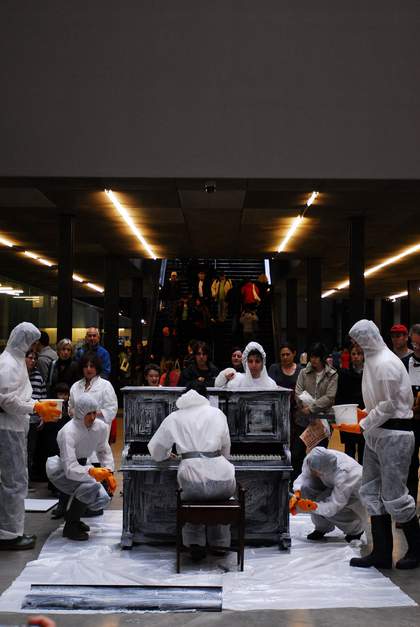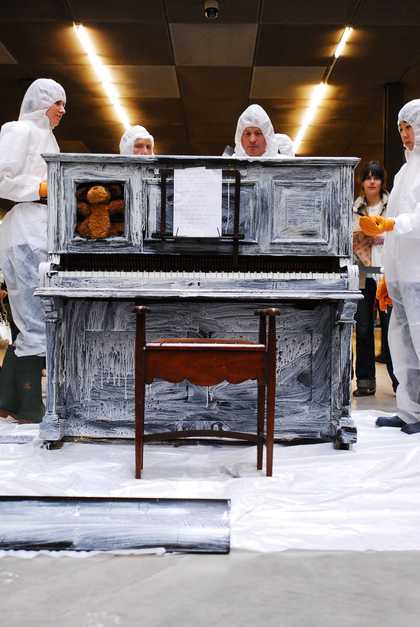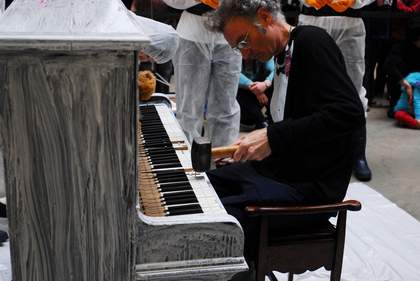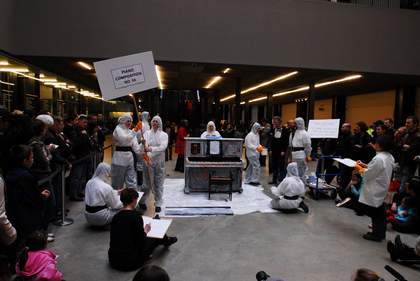The Long Weekend – States of Flux at Tate Modern in May 2008 marked the realisation of the Fluxus Olympiad conceived by the founder of the Fluxus movement George Maciunas. Responding to the collection display State of Flux, which included a significant amount of archival material related to Fluxus, The Long Weekend explored both the history of the movement, through the reimagining of classic Fluxus works, and its legacy in contemporary art. As well as taking Maciunas’s unrealised Olympiad and enacting it as the Flux-Olympiad, the weekend also included the reperformance of another piece by the artist, 12 Piano Compositions for Nam June Paik. This was one of a number of instruction-based pieces Maciunas developed in the 1960s and 1970s and it was presented at Tate Modern in conjunction with other score-based works by other Fluxus or Fluxus-inspired artists as part of the Turbine Flux Concerts.
The performance of 12 Piano Compositions for Nam June Paik combined an original Fluxus piece with a contemporary re-enactment. Maciunas’s original piece comprised a series of instructions involving a piano, a number of performers and a prescribed set of actions. It was originally performed in 1962 in Wiesbaden.1 The Tate Modern iteration, titled Selection from 12 Piano Compositions for Nam June Paik, included eight performers – students from Goldsmiths, University of London as well as event organiser and Fluxus specialist Simon Anderson – dressed in white overalls and black boots. Sara Seagull, artist and former assistant to Fluxus artist Robert Watts, delivered instructions to the ensemble. First they carried the piano into the Turbine Hall and then set about addressing the twelve original instructions issued by Maciunas, interpreting them anew. For instance, when told to place a dog or a cat in the piano, the group sawed a hole into the body of the piano and place a stuffed animal in the alcove. During the performance, parts of the piano were painted over, hammered into and sawed off or otherwise removed while the audience looked on. Elements were added into the body of the piano, images were made of the instrument on easels and a small toy piano was placed on top of the real one to fulfil the instruction ‘place one piano on top of another’. At one point a performer held up a sign which read ‘Piano Composition No.10’, a direct reference to the numbered instruction they were undertaking.
The instructions were not undertaken in their original written order; as artist Alison Knowles observed, it was the painting of the piano in white and orange (instruction number three) that marked the end of the performance in this new version, whereas the original score indicated that the end of the performance should be marked by carrying the piano off-stage.2
The Tate Modern ‘Selection from’ Maciunas’s work did not seek to recreate the 1962 version of the performance. Rather, it approached Maciunas’s instructions as a score to be adapted and re-ordered to fit a new context. The use of the term ‘composition’, both in the original and the re-performance, alluded to this re-ordering and the flexible nature of the score. Much like the other pieces shown during The Long Weekend, in 12 Piano Compositions for Nam June Paik the instructions were not rigid rules but frameworks within which different activities could take place – something characteristic of Fluxus work.
Acatia Finbow
November 2015

